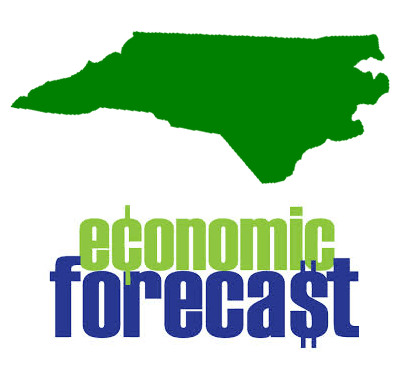Belk College economist says signs point to slight N.C. economic slowdown

Several diverse factors will likely slow the U.S. and North Carolina economies during 2014, UNC Charlotte economist John Connaughton reported today in his quarterly forecast for the state.
“First, the Federal Reserve is continuing to taper its quantitative easing program. Since September of 2012, the Fed has been purchasing $85 billion in mortgage back securities and U.S. Treasury bonds per month. Beginning in January of this year, the Fed began to taper its purchases and is now buying only $45 billion a month. This tapering has had an effect on mortgage rates, just as the residential real estate market was beginning to show signs of life. The result has been slowed home sales and prices during the last two months.
“The second factor is the aging of the labor force. We have known for some time that the labor force participation rate has been falling, but many have attributed this decline to discouraged workers dropping out of the labor market. However, it appears the issue is more complex. Baby boomers are reaching retirement age and creating two significant problems for the economy when they leave the labor force. Upon retirement, they reduce their level of purchases, thus reducing overall consumption. Their retirement also reduces the absolute size of the labor force, thus reducing potential GDP and lowering economic growth. This phenomenon is the beginning of a problem that will be with us for several decades.”
 Connaughton, the Babson Capital Professor of Financial Economics in the Belk College of Business, presented his quarterly forecast to members of the Charlotte business community and the media at a luncheon held at UNC Charlotte Center City. The forecast is funded by Babson Capital Management LLC.
Connaughton, the Babson Capital Professor of Financial Economics in the Belk College of Business, presented his quarterly forecast to members of the Charlotte business community and the media at a luncheon held at UNC Charlotte Center City. The forecast is funded by Babson Capital Management LLC.
2013 in Review
Gross State Product (GSP) reached a level of $473,614.4 million in 2013. Real inflation-adjusted GSP increased by 2.3 percent over the 2012 level. GDP growth in 2013 followed a moderate GSP increase of 3.0 in 2012.
For 2013, first quarter GSP declined slightly by an annualized real rate of 0.2 percent. During the second quarter, GSP growth increased substantially to an annualized real rate of 3.5 percent. In the third quarter, GSP recorded an annualized real growth rate of 1.1 percent. In the fourth quarter of 2013, GSP is expected to grow at an annualized real rate of 1.5 percent. Fourteen of the state’s fifteen economic sectors experienced output increases during 2013. The sectors with the strongest expected growth were:
- Agriculture with a real increase of 21.6 percent
- Educational and Health Services with a real increase of 5.2 percent
- Transportation, Warehousing, and Utilities (TWU) with a real increase of 4.3 percent
- Business and Professional Services with a real increase of 4.0 percent
- Wholesale Trade with a real increase of 3.4 percent
- Other Services with a real increase of 2.7 percent
- Finance, Insurance, and Real Estate with a real increase of 2.6 percent
- Hospitality and Leisure Services with a real increase of 2.3 percent
Forecast director Connaughton said, “2013 turned out to be a mixed year. During the first quarter of 2013, this moderate growth pattern slowed dramatically as a result of the fiscal measures put into place the first of the year. After a first quarter sluggish start, real GSP growth soared to 3.5 percent during the second quarter. This growth spurt gave rise to stronger growth during the second half of 2013. However, despite rising consumer confidence and continued Federal Reserve Bank quantitative easing, the second half of 2013 proved to be disappointing.”
2013 Employment in Review
Seasonally adjusted nonagricultural employment in North Carolina reached 4,104,200 persons in December 2013, an increase of 1.8 percent over the employment level in December 2012. The state gained 85,600 net jobs during the year.
Twelve of the state’s 14 fourteen nonagricultural sectors of the economy experienced employment increases during 2013. The sectors with the strongest employment increases in 2013 were other services at 6.0 percent, business and professional services at 4.1 percent, and hospitality and leisure services at 2.5 percent.
The North Carolina seasonally adjusted unemployment rate began 2013 at 9.5 percent, while the United States rate was 7.9 percent. By December, the North Carolina rate had fallen to 6.9 percent, while the United States rate had fallen to 6.7 percent.
2014 Economic Forecast
The North Carolina economy is expected to increase by an inflation-adjusted rate of 1.9 percent during 2014. For 2014, first quarter GSP is expected to increase at an annualized real rate of 2.0 percent. During the second quarter, GSP is expected to increase at an annualized real rate of 2.1 percent. In the third quarter, GSP is expected to record an annualized real growth rate of 2.0 percent. In the fourth quarter of 2014, GSP is expected to grow at an annualized real rate of 2.3 percent.
All 15 fifteen of the state’s economic sectors are forecast to experience output increases during 2014. The sectors with the strongest expected growth are:
- Agriculture with a projected real increase of 10.9 percent
- Mining with a projected real increase of 9.4 percent
- Construction with a projected real increase of 2.8 percent
- Education and Health Services with a projected real increase of 2.1 percent
- Finance, Insurance, and Real Estate with a projected real increase of 1.9 percent
- Hospitality and Leisure Services with a projected real increase of 3.3 percent
- Other Services with a projected real increase of 3.2 percent
- Transportation, Warehousing, and Utilities (TWU) with a projected real increase of
3.3 percent - Wholesale Trade with a projected real growth rate of 2.3 percent
2014 Employment Forecast
In January 2014, the North Carolina unemployment rate fell below the U.S. rate for the first time since December 2007. Both the U.S. and North Carolina unemployment rates are expected to continue the same downward trend throughout 2014, and by December the North Carolina unemployment rate is expected to be around 5.8 percent. Seasonally adjusted nonagricultural employment in North Carolina is expected to reach 4,163,900 persons in December 2014, an increase of 1.5 percent over the employment level in December 2013. The state is expected to gain 59,700 net jobs during the year.
The full Economic Forecast report is available online. Connaughton will release his next economic forecast in September 2014.